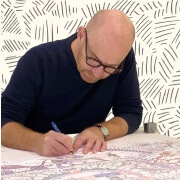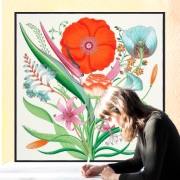I am Dimitri Rybaltchenko, and I have been designing carré scarves for Hermès for 35 years. My great-uncle Philippe Ledoux created many of Hermès’s signature carrés in the 1950s. After his passing, my father Vladimir Rybaltchenko took up the reins and created designs of his own. I grew up watching my great-uncle and father draw, so drawing has always meant a lot to me.
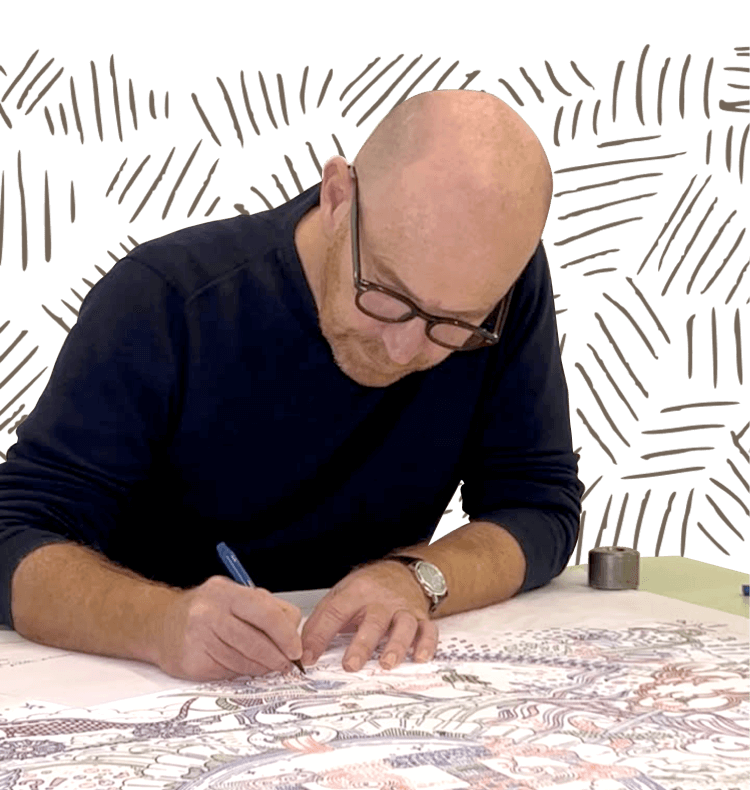
The Hermès Drawing Society
Dimitri Rybaltchenko
I will never forget the day in June 1990 when I asked my father to bring me along to a meeting at Hermès. I was in my early twenties at the time, and I was there to show my drawings to then-chairman Jean-Louis Dumas for the first time. I watched eagerly as he laid out my three designs for beach towels on the floor. He sat on a low stool and looked at them, then stood up and looked at them. The whole time, he remained silent. Finally, he picked up the third drawing; it was a pelican. He cut out and made a copy of the design, then held out the blank part of the paper that was left over and told me to write the date and my name. That was how my first design for Hermès was accepted.

©️Studio des fleurs
In the 35 years since, I have drawn many carré designs inspired by the annual themes. This year’s theme, “Drawn to Craft”, gave rise to “Please Hold The Line”. One day, when I made a work call to Hermès, I was told to “please hold the line”. With nothing to do while waiting, I started to doodle on a piece of paper with a four-colour ballpoint pen. I think everyone has a similar story. Those aimless wanderings of my pen became the basis for this carré. Its initial colours are red, green, blue, and black—the pen’s four colours. My contribution to the annual theme is to affirm that this sketch is also a drawing, regardless of its origins.
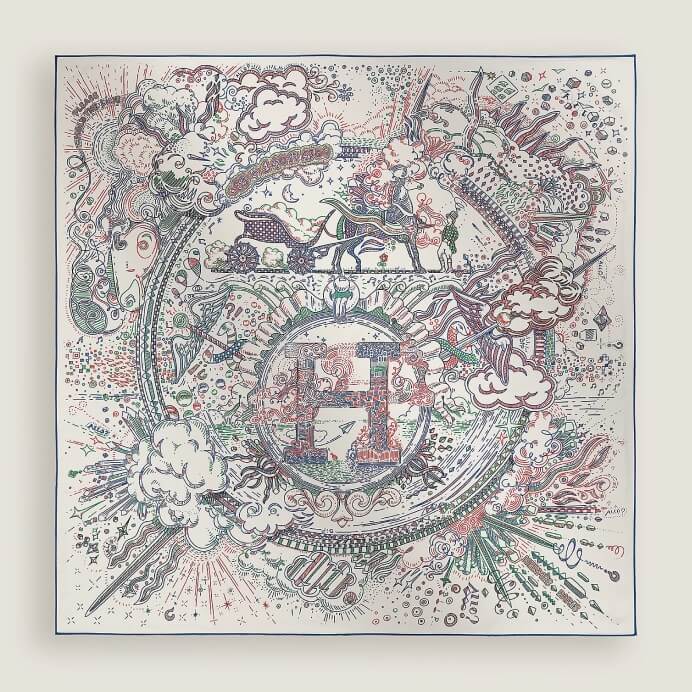
A carré may be two-dimensional, but it is also a window to another world. My window displays at Ginza Maison Hermès are three-dimensional versions of this same idea. For the storefront displays, I used markers to draw almost all the designs by hand over a period of two weeks.
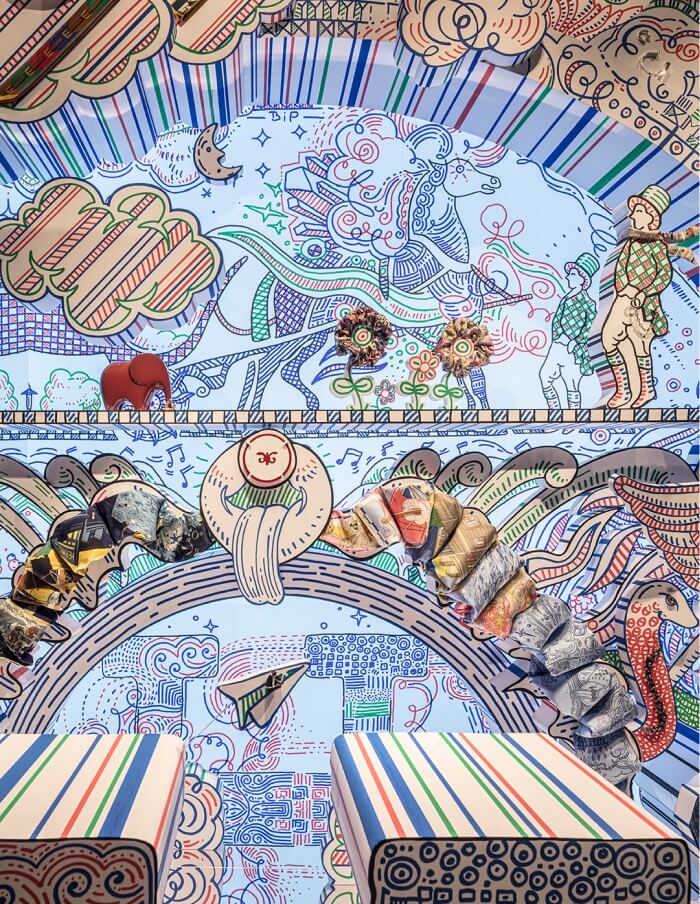
Whether for a carré or a window display, all of my designs start life as hand-drawn sketches. Drawing is the essence of my life; I express myself through drawing and find answers through drawing. It is a means of communication, something that can surprise and delight people, that can stir our emotions. It is a universal language that everyone can understand, even if we don’t speak the same tongue. Drawing is a never-ending journey of freedom and adventure. It is trying, and it is failing. In short, it is life itself.
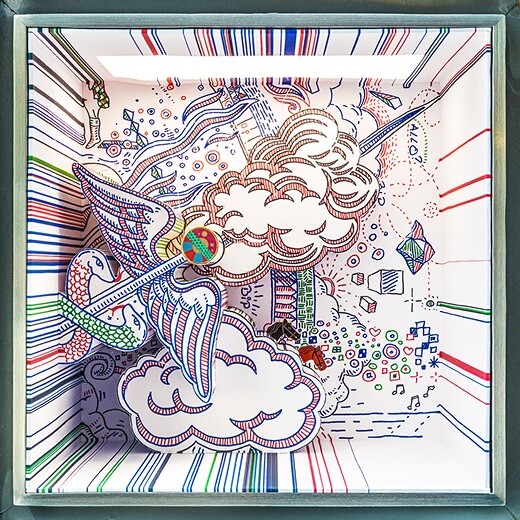
“Please Hold The Line”, a window display designed by Rybaltchenko, is available to view at Ginza Maison Hermès through 2 September.
When I draw something, I try to stay mobile. I want to be free and fluid, unbound by rigid thinking. I want to look at things like a child who flits curiously from one thing to another. By shifting my point of view, I can create poetry, humour, and different worldviews. When I draw, there is nothing more valuable than mobility.

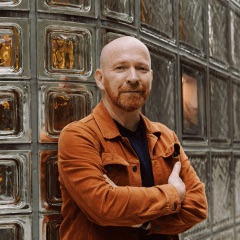
Dimitri Rybaltchenko
Rybaltchenko is a Paris-based artist who has been designing carrés for Hermès since 1990, like his great-uncle Philippe Ledoux and father Vladimir Rybaltchenko did before him. In addition to carrés, he has also designed watch dials and the Volt’H Maxi mobile battery.



